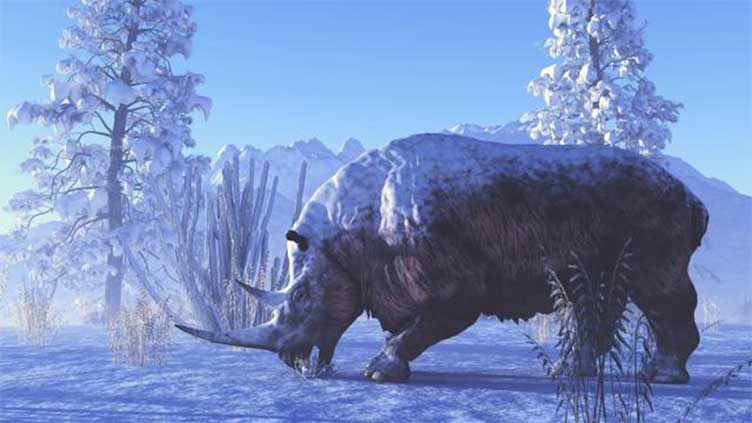32,400-year-old woolly rhino mummy unearthed in Russia

WeirdNews
Preserved in permafrost, the ancient creature has provided valuable insights into the extinct specie
(Web Desk) – A remarkably well-preserved woolly rhinoceros was discovered near the Tirekhtyakh River in Russia’s Sakha Republic.
The frozen carcass dates back to 32,400 years. A team of researchers led by Gennady Boeskorov from the Diamond and Precious Metals Geology Institute, Siberian Branch of the Russian Academy of Sciences, analyzed the remains.
This ancient creature, named the “Abyisky rhinoceros,” has provided scientists with a unique window into the past. Even though it is over 32,000 years old, many parts of the rhino’s soft tissues, skin, and wool were found intact in the sub-zero permafrost.
Stretch ceiling and human cannon, the best of IE this week
This exceptional preservation allowed scientists to study its anatomy in unprecedented detail.
Woolly rhinos were large, shaggy animals with two horns that lived in Eurasia during the Pleistocene. These creatures are scientifically known as Coelodonta antiquitatis.
Woolly rhinos lived alongside woolly mammoths during the Ice Age. These were the second-largest animals in their ecosystem, surpassed only by their tusked counterparts.
In this new study, one of the most fascinating discoveries was the rhino’s youthful age. Its short, light-colored hair indicated that it was only a young animal when it died, roughly around 4.5 years old.
“In this study we describe a newly found frozen mummy of a young woolly rhinoceros (4–4.5 years old), dated to the Karginian Interstadial of the Late Neopleistocene (32 440 ± 140 years ago),” the researchers wrote in the study paper.
Perhaps the most surprising find was a fatty hump on the rhino’s back. This “anatomical peculiarity” had never been seen before in woolly rhinoceroses.
The presence of similar fatty deposits in woolly mammoths suggests that they may have served a similar purpose, such as insulation or energy storage.
As per the study, the analysis of the rhino’s wool revealed traces of water fleas or tiny parasitic crustaceans that are extinct in the area.
“Numerous remains of microscopic crustaceans were found in the wool, including representatives of the genus Moina (Cladocera: Moinidae), currently absent in the region,” the study noted.
Woolly rhinos were plant-eating mammals that inhabited the northern parts of Eurasia, especially Siberia, for millions of years until their extinction around 10,000 years ago.
These were once a common sight in the northern regions of Eurasia. They roamed the icy landscapes alongside mammoths, wolves, and cave lions. Despite their abundance, only a handful of well-preserved specimens have been found.



